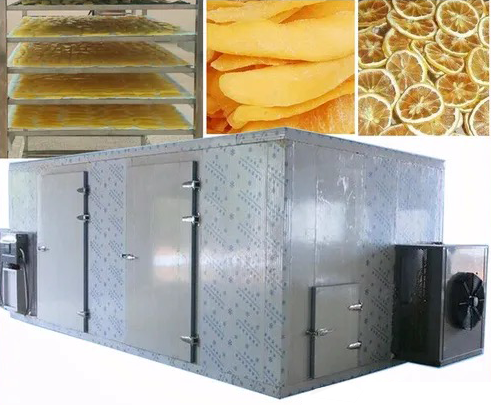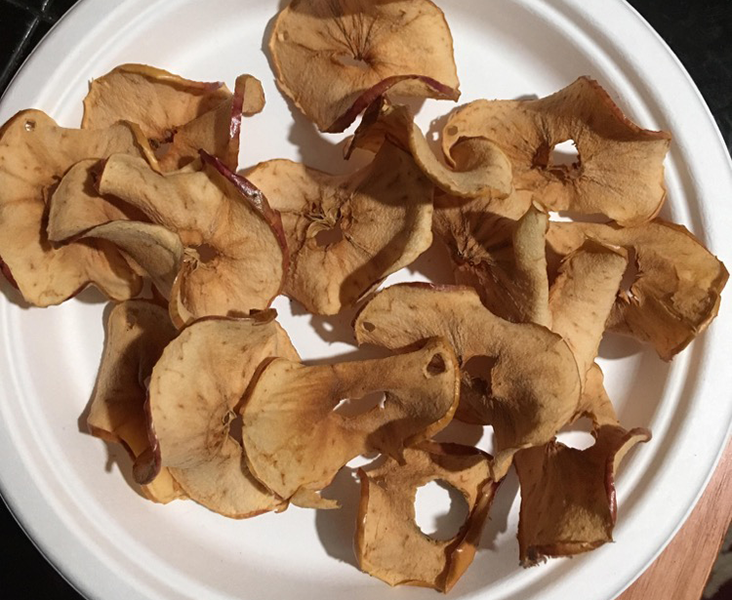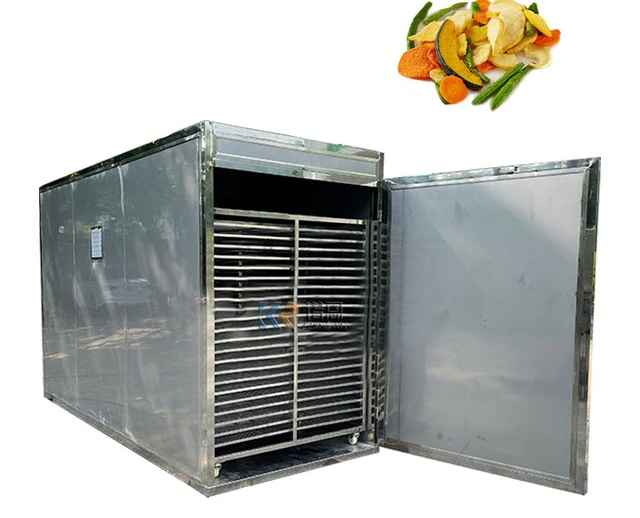
Content Menu
● Understanding Dual Inverter Heat Pump Technology
>> Key Features of Dual Inverter Heat Pump Dryers:
● Benefits of Using Heat Pump Dryers for Food
● How Does a Dual Inverter Heat Pump Dryer Work?
● Applications in Food Drying
● Comparison with Traditional Drying Methods
● Advanced Features of Modern Dual Inverter Heat Pump Dryers
● The Importance of Moisture Control
>> How Moisture Sensors Work:
● Environmental Benefits
● Case Studies in Food Drying
>> Home Use Case Study
>> Commercial Use Case Study
● Future Trends in Food Drying Technology
● Conclusion
● FAQ
>> 1. What is a dual inverter heat pump dryer?
>> 2. How does a heat pump dryer differ from conventional dryers?
>> 3. Can I use a dual inverter heat pump dryer for all types of food?
>> 4. Are heat pump dryers environmentally friendly?
>> 5. What are some common applications of heat pump drying technology?
● Citations:
In the realm of food preservation, drying is a critical process that enhances shelf life while retaining nutritional value. As technology evolves, so do the methods used for drying food. One of the most innovative advancements in this field is the Dual Inverter Heat Pump Dryer. This article explores whether this technology is superior for drying foods compared to traditional methods.

Understanding Dual Inverter Heat Pump Technology
A Dual Inverter Heat Pump Dryer operates using two compressors instead of one, which allows for more efficient temperature control and energy usage. This technology is designed to provide a stable and controlled drying environment, which is crucial for preserving the quality of food products.
Key Features of Dual Inverter Heat Pump Dryers:
- Energy Efficiency: The dual compressor system reduces energy consumption significantly compared to conventional dryers.
- Temperature Control: It maintains lower temperatures, which is essential for drying heat-sensitive foods without compromising their quality.
- Low Noise Operation: The design minimizes noise levels, making it suitable for home use.
- Eco-Friendly: Reduced energy consumption translates into lower carbon emissions, making it a more environmentally friendly option.
Benefits of Using Heat Pump Dryers for Food
Heat pump drying technology offers several advantages over traditional drying methods:
- Controlled Environment: It allows precise control over temperature and humidity, leading to better product quality. This is particularly important for fruits and vegetables that can easily lose their nutrients and flavor if dried improperly.
- Energy Savings: Studies show that heat pump dryers consume significantly less electricity—often about 50% less—than conventional dryers. This not only saves money but also reduces the environmental impact of food processing.
- Better Quality Products: By operating at lower temperatures, heat pump dryers help retain the color, flavor, and nutritional value of dried foods. For instance, drying fruits at high temperatures can lead to browning and nutrient loss, whereas heat pump technology minimizes these issues.
How Does a Dual Inverter Heat Pump Dryer Work?
The operation of a Dual Inverter Heat Pump Dryer involves several key components:
1. Evaporator: Absorbs moisture from the air inside the dryer.
2. Compressor: The dual compressors increase efficiency by compressing refrigerant gas to a higher pressure and temperature.
3. Condenser: Releases the absorbed moisture outside while recycling heat back into the dryer chamber.
4. Expansion Valve: Regulates the flow of refrigerant, ensuring optimal performance.
This cycle not only dries food effectively but also recycles energy within the system, enhancing overall efficiency.
Applications in Food Drying
Heat pump dryers are versatile and can be used for various food products:
- Fruits: Apples, bananas, and berries can be dried without losing their vibrant colors or flavors.
- Vegetables: Carrots, tomatoes, and peppers maintain their nutritional integrity when dried with this technology.
- Herbs: Delicate herbs retain their essential oils and aromas better than with traditional drying methods.
- Meats: Jerky production benefits from the low-temperature drying process that preserves flavor and texture while extending shelf life.
Comparison with Traditional Drying Methods
To understand the advantages of Dual Inverter Heat Pump Dryers better, let's compare them with traditional drying methods:
| Feature | Dual Inverter Heat Pump Dryer | Traditional Dryers |
| Energy Consumption | Low (50% less) | High |
| Temperature Control | Precise | Limited |
| Nutrient Retention | High | Moderate to Low |
| Noise Level | Low | Moderate to High |
| Environmental Impact | Eco-friendly | Higher carbon footprint |
Advanced Features of Modern Dual Inverter Heat Pump Dryers
Modern dual inverter heat pump dryers come equipped with smart features that enhance user experience. These may include:
- WiFi Connectivity: Allows remote monitoring and control through smartphone applications.
- Customizable Drying Programs: Users can select specific programs tailored to different types of food items or desired dryness levels.
- Real-Time Energy Consumption Tracking: Provides insights into energy usage during each drying cycle.
- Maintenance Alerts: Notifies users when it's time to clean filters or perform maintenance tasks to ensure optimal performance.
These features not only make operation easier but also contribute to energy savings and improved food quality.

The Importance of Moisture Control
One of the critical aspects of effective food drying is moisture control. Advanced moisture sensing technology in dual inverter heat pump dryers ensures that food is dried evenly and thoroughly. This consistency helps prevent issues such as under-drying or over-drying, which can compromise food quality.
How Moisture Sensors Work:
- Real-Time Monitoring: Sensors continuously monitor humidity levels inside the dryer.
- Automatic Adjustments: Based on real-time data, the dryer adjusts temperature and airflow to maintain optimal conditions for drying specific foods.
This level of precision is often unattainable with traditional drying methods, where manual monitoring is required.
Environmental Benefits
The environmental benefits of using dual inverter heat pump dryers extend beyond just energy savings:
- Reduced Carbon Footprint: By consuming less energy than traditional dryers, these appliances contribute to lower greenhouse gas emissions over their operational lifespan.
- Sustainable Practices: Many manufacturers are adopting eco-friendly materials in their construction processes, ensuring that these appliances are not only efficient but also sustainable.
- Waste Reduction: By preserving food longer through effective drying methods, consumers can reduce waste associated with spoiled produce.
Case Studies in Food Drying
Home Use Case Study
A family utilizing a dual inverter heat pump dryer reported significant improvements in their ability to dry fruits like apples and strawberries without losing color or taste. They noted that their dried snacks retained more nutrients compared to those processed using conventional methods. This family found that they could prepare healthy snacks year-round by preserving seasonal fruits effectively.
Commercial Use Case Study
A local organic farm adopted dual inverter heat pump technology for their herb production line. The farm reported that using this technology allowed them to dry basil and oregano without losing essential oils critical for flavor retention. As a result, they were able to market higher-quality dried herbs that appealed more strongly to consumers who value organic products with robust flavors.
Future Trends in Food Drying Technology
As we look ahead in food preservation technologies:
- Integration with IoT Devices: Future models may integrate even more sophisticated IoT capabilities allowing users to monitor conditions remotely via apps while receiving alerts on optimal times for harvesting fresh produce based on weather patterns.
- Hybrid Technologies: Combining multiple drying technologies (e.g., microwave-assisted) alongside heat pumps could further enhance efficiency while preserving nutritional values even better than current models allow.
- Research on New Materials: Ongoing research into new materials for insulation within these devices may lead to even greater energy savings while improving performance metrics across various types of foods being dried.
By keeping abreast of these trends and advancements in dual inverter heat pump dryer technologies specifically tailored towards food applications—consumers will continue benefiting from enhanced preservation techniques that align with modern sustainability goals while enjoying high-quality dried products at home or commercially produced goods available on store shelves today!
Conclusion
In conclusion, a Dual Inverter Heat Pump Dryer demonstrates significant advantages over traditional food drying methods. Its energy efficiency, precise temperature control, advanced moisture sensing capabilities, and ability to maintain product quality make it an ideal choice for both commercial food processors and home users looking to preserve their foods effectively. As technology continues to evolve, adopting such innovations will likely play a pivotal role in sustainable food practices.

FAQ
1. What is a dual inverter heat pump dryer?
A dual inverter heat pump dryer uses two compressors to enhance energy efficiency and improve temperature control during the drying process.
2. How does a heat pump dryer differ from conventional dryers?
Heat pump dryers operate at lower temperatures and recycle energy within the system, leading to reduced energy consumption and better product quality compared to conventional dryers.
3. Can I use a dual inverter heat pump dryer for all types of food?
Yes, dual inverter heat pump dryers are suitable for various foods including fruits, vegetables, herbs, and even meats due to their controlled drying environment.
4. Are heat pump dryers environmentally friendly?
Yes, they consume less electricity compared to traditional dryers, resulting in lower carbon emissions and a smaller environmental footprint.
5. What are some common applications of heat pump drying technology?
Common applications include drying fruits like apples and bananas, vegetables such as tomatoes and peppers, as well as herbs like basil and oregano.
Citations:
[1] https://www.youtube.com/watch?v=Lg6a7IOXHRo
[2] https://www.dryeratech.com/what-are-the-key-benefits-of-a-dual-inverter-heat-pump-dryer.html
[3] https://pmc.ncbi.nlm.nih.gov/articles/PMC10528370/
[4] https://www.mdpi.com/2227-9717/12/5/942
[5] https://www.youtube.com/watch?v=Nk8nnUAWlFY
[6] https://www.dryeratech.com/what-is-a-dual-inverter-heat-pump-dryer.html
[7] https://www.mdpi.com/2076-3417/13/19/10597
[8] https://www.frontiersin.org/research-topics/58144/sustainable-drying-technologies-for-foods-enhancing-quality-and-energy-efficiencyundefined
[9] https://static.pcrichard.com/docs/DLHC1455W_Specifications-Sheet_01.pdf
[10] http://sciencebeingjournal.com/sites/default/files/Octa%20J.%20Biosci.%20Vol.%2010%20(2)124-133_0.pdf











